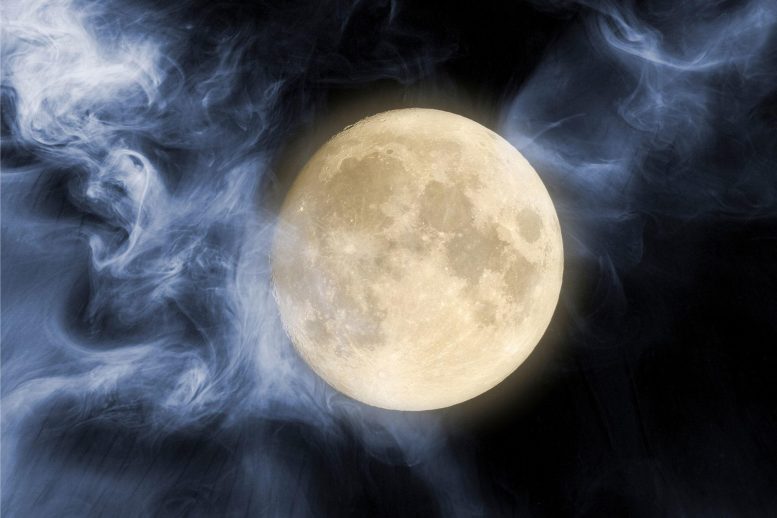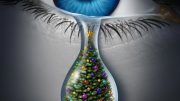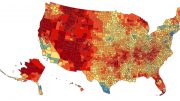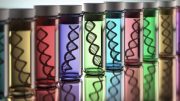
A study by psychiatrists at Indiana University School of Medicine found that suicides significantly increase during the week of a full moon, with people over 55 at even higher risk. The researchers suggest that high-risk patients should be closely monitored during full moons, late afternoons, and the month of September, as these factors, along with light exposure and circadian rhythm disruptions, may contribute to increased suicidality.
For centuries, it has been suspected that the full moon has a mysterious impact on human behavior. Now, recent research conducted by psychiatrists at the Indiana University School of Medicine has discovered that there is a correlation between the full moon and an increase in suicide deaths.
“We wanted to analyze the hypothesis that suicides are increased during the period around full moons and determine if high-risk patients should be followed more closely during those times,” said Alexander Niculescu, MD, Ph.D.
Niculescu and his colleagues analyzed data from the Marion County coroner’s office covering suicides that occurred from 2012 to 2016. The results showed a marked increase in suicide deaths during the week of the full moon, with a particularly pronounced rise among individuals over the age of 55. The team also observed that suicides were most likely to occur in the afternoon, between 3 and 4 p.m., and that the month of September was also a peak time.
The team recently published their findings in the journal Discover Mental Health.
“From a clinical perspective and a public health perspective, we found some important take-home messages in this study,” Niculescu said. “High-risk patients should possibly be followed more closely the week of the full moon, during late afternoons, and perhaps the month of September.”
Niculescu and his team previously developed blood biomarker tests for other mental health conditions (anxiety, depression, and post-traumatic stress disorder) and for pain. Using blood samples previously taken by the coroner from some of the people, the team was able to see which biomarkers were present.
“We tested a list of top blood biomarkers for suicidality that we identified in previous studies,” Niculescu said. “The biomarkers for suicidality that are predictive of death by suicide during a full moon, peak hour of day and peak month of the year compared to outside of those periods appear to be genes that regulate the body’s own internal clock, so called ‘circadian clock’. Using the biomarkers, we also found people with alcohol-use disorder or depression may be at higher risk during these time periods.”
Niculescu said the increased light from the full moon could be what leads to the increase in suicides during that period. Ambient light plays a major role on the body’s circadian rhythm, which is the natural 24-hour cycle our bodies follow to regulate when we are asleep and when we are awake. Moonlight could be impacting people at a time when it should be darker.
“The effect of ambient light and body clocks in suicide needs to be studied more closely, along with how people sleep and their exposure to light,” Niculescu said. “Changes in light can affect vulnerable people, in conjunction with other risk factors.”
As for the other two peak periods for suicides, Niculescu said the peak of suicides from 3 to 4 p.m. could be related to stressors throughout the day as well as a decrease in light beginning to occur that day, causing a lower expression of circadian clock genes and cortisol. And in September, many people are experiencing the end of summer vacations, which could cause stress, as well as seasonal affective disorder effects, as daylight decreases during that time of year.
“Our work shows the full moon, fall season and late afternoon are temporal windows of increased risk for suicide, particularly in individuals who suffer from depression or alcohol use disorders,” Niculescu said. In the future, Niculescu hopes to study if exposure to screens at night contributes to increased suicidality in people, especially younger people. “Some people have a full moon in their hand every night,” Niculescu said. “It’s an area we absolutely need to study further.”
Reference: “Temporal effects on death by suicide: empirical evidence and possible molecular correlates” by R. Bhagar, H. Le-Niculescu, K. Roseberry, K. Kosary, C. Daly, A. Ballew, M. Yard, G. E. Sandusky and A. B. Niculescu, 3 April 2023, Discover Mental Health.
DOI: 10.1007/s44192-023-00035-4









The ambient light theory leaves much to be desired. People in the country have far less nighttime ambient light than those in the city. Furthermore, ambient light could not be a cause for the 3 – 4 p.m. cases as the Full Moon isn’t even visible during this hour. The decline in mental stability is more likely due to the conductance of the local environment affecting the conductance of the body. With the Earth directly between the Sun and Moon, subtle changes in the ability of electrical signals to move through the body appear to be affected. The 3 – 4 p.m. period may be related to “light” due to the decline in the photoelectric effect during the day. Noon represents the strongest hour of the day for photoelectric charging of all life forms, including humans. Similarly, September represents the period of daylight decline in the Northern Hemisphere when the intensity of the photoelectric effect is significantly lower than during the Summer Solstice. The body is an electrochemical machine. Applying adequate lighting, exercise, and diet are needed to boost the body’s electrochemical mechanics during periods of lower environmental conductance.
There’s a reason for the word “lunatic.” The association between moon phases and madness is ancient.